Description
A longer than usual example, nearing katana length, with signed blade 21 1/4″ long,
measured kisaki (point) to mune machi (back edge notch). Shallow notare hamon (edge
temper line with shallow waves), o-kissaki (long point), ihori-mune (double-sided back
edge). Signed nakago (tang) with two mekugi-ana (mounting holes), mei (signature)
difficult to make out. Koshirae (mounts) include old iron tsuba (guard) of simple design
with roped edge and small copper inserts adapted to fit this blade, two-piece copper habaki
(blade collar), fuchi (grip collar) and kashira (butt cap) of iron chiseled ensuite, old
somewhat worn same’ (rayskin grip) with old brown ito (silk braid), and two copper menuki
(grip decorations) showing cherry blossoms, with gilt highlights. Black leather-covered
saya (scabbard) with slot for a missing kozuka (side knife), with the traditional kurikata
(cord knob) and supplemented with a later silver-plated carry band and ring. Saya with
alterations and losses. Blade is likely late koto era (16th/17thC). The koshirae is from its
period of use and showing age and wear commensurate with field use. Overall length 30
3/4″, not including saya. The blade is bright and clean by Western standards, but not in
polish by Japanese standards.



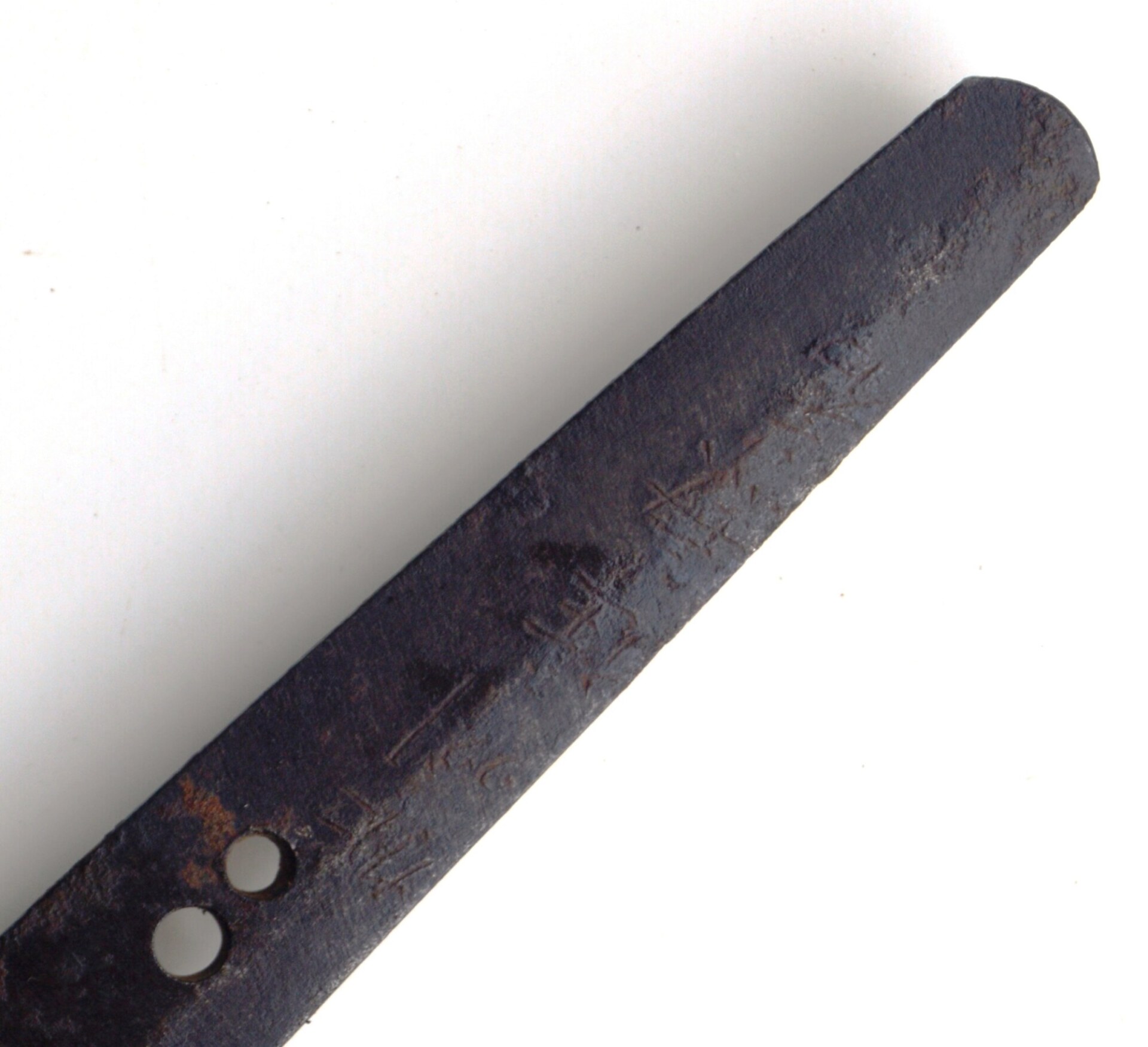
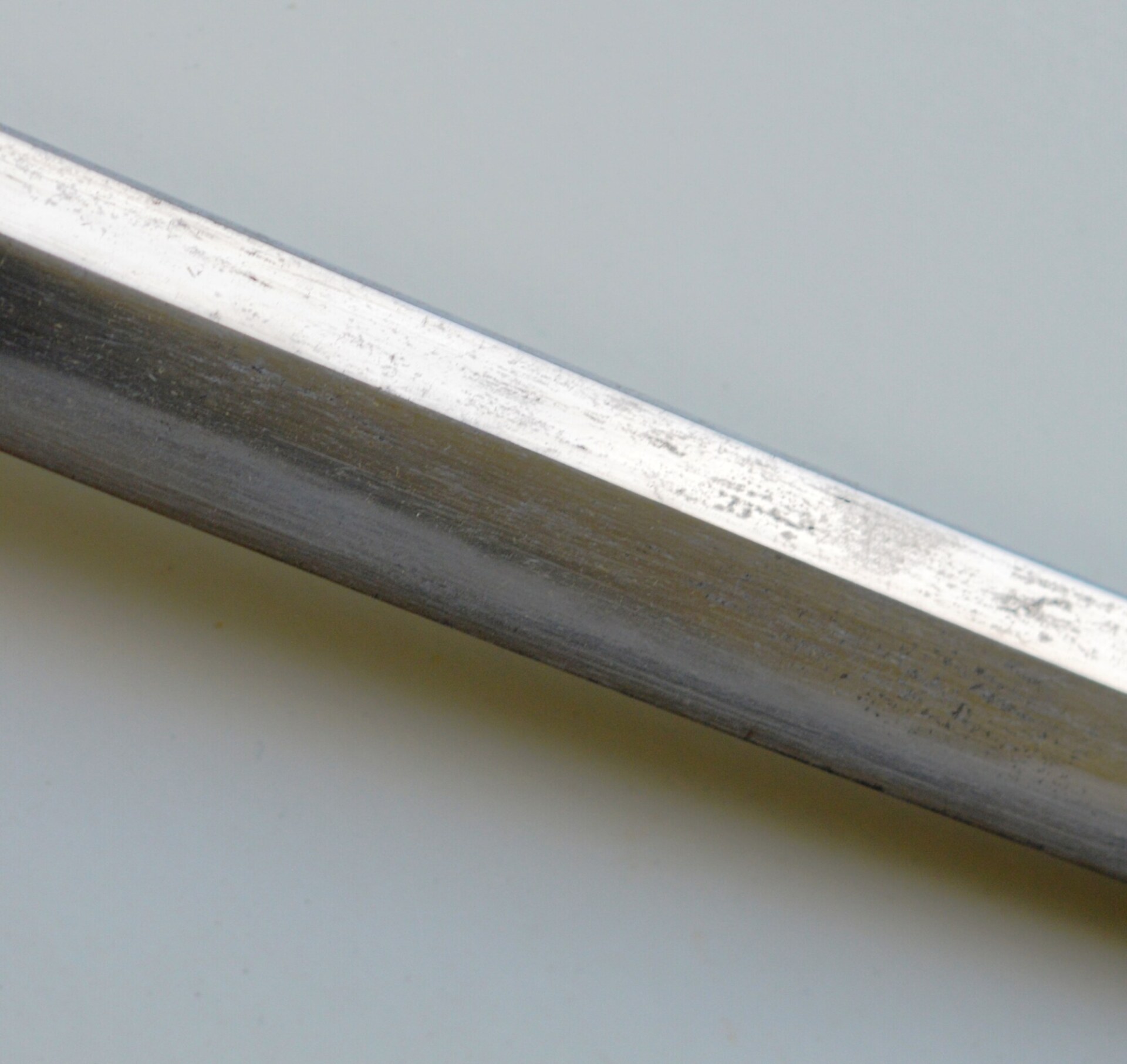











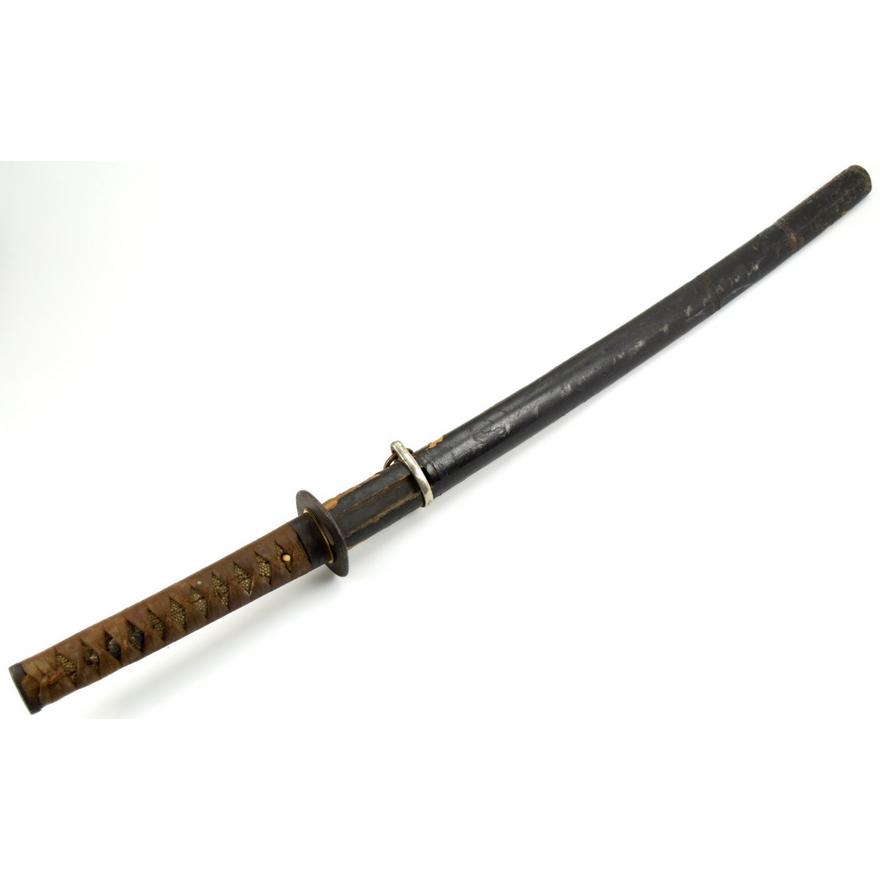
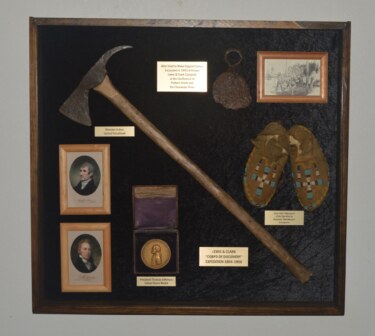 Historic Lewis & Clark “Corps of Discovery” Display
Historic Lewis & Clark “Corps of Discovery” Display 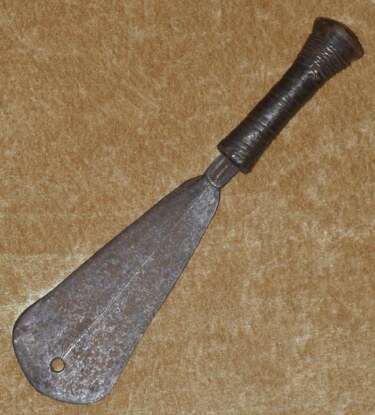 Central African Yakoma Club Knife, 19th C
Central African Yakoma Club Knife, 19th C  WWII Nazi German Army Heer Officer’s Lion Head Sword
WWII Nazi German Army Heer Officer’s Lion Head Sword 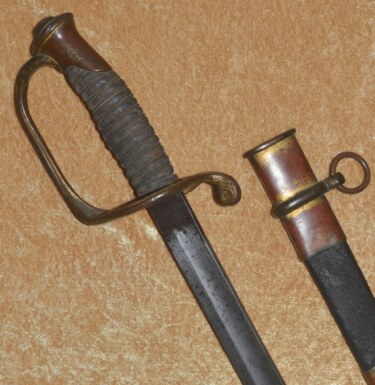 US Civil War M1850 Foot Officer’s Sword
US Civil War M1850 Foot Officer’s Sword